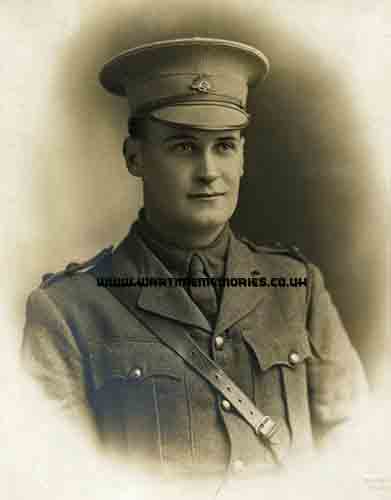Additions will be checked before being published on the website and where possible will be forwarded to the person who submitted the original entries. Your contact details will not be forwarded, but they can send a reply via this messaging system.
please scroll down to send a message
Lt. Arthur Douglas Hogan
Australian Imperial Force 21st Battalion
from:Wagga Wagga, NSW, Australia
(d.9th October 1917)
Arthur Hogan was born on 30th of November 1886 in Sydney, NSW, Australia. He was an optician and jewellery salesman by trade, and prior to enlisting in April 1915, had been living in the Riverina town Wagga Wagga for three years. There, he was employed by the town's oldest business, Messrs. Hunter Bros. (which still exists today), as Manager of their jewellery department. He was almost 29 years old when he enlisted.
He undertook his basic military training at Broadmeadows Camp in Victoria, where he also attended the 6th Officer's School of Instruction. After receiving his Commission (2nd Lieutenant) on 16 July 1915, he sailed from Melbourne aboard the 'Nestor' on 11 October, arriving in Suez two months later.
As part of the 5th Battalion, he was stationed in Egypt for the next three months. In February 1916, he was invalided back to Australia for 3 months' change, having contracted paratyphoid fever. On his arrival back in Australia, he returned to Broadmeadows, and transferred from the 5th Battalion to the 13th. On 3rd of July 1916, he once again left Australia, this time, bound for the battlefields of the Western Front.
On 11th of December 1916, Arthur was promoted to the rank of Lieutenant, serving with the 21st Battalion. In March 1917, during the fighting around Bapaume, Arthur was shot through the left thigh. Although a severe injury, he was lucky that it hit neither nerves nor bone. 8 days later, he was admitted to the 8th General Hospital at Rouen, before being shipped back to England and admitted to the Kitchener Military Hospital at Brighton. In May 1917, Arthur was transferred from Brighton to Cobham Hall, an Australian convalescent hospital in Kent. He was discharged from Cobham Hall in June 1917, and from there, travelled to Perham Downs near Tidmouth, where he finished his convalescence.
On 3rd of July 1917, Arthur returned to France. On 10 August, he was appointed Bombing Officer with the 6th Brigade.
Early on the morning of 4th of October 1917, the Battle of Broodseinde Ridge began. A large operation, involving 12 divisions, the Australian troops involved were shelled heavily on their start line, and one seventh of their number became casualties even before the attack began. The cost of this battle for the Australians was high, with Australian divisions suffering 6,500 casualties.
Arthur fell on 9th of October 1917, most probably shot by a sniper. His Battalion Commander wrote, in a letter to his mother: 'I happened to be in command of the attack on 9th of October and unhesitatingly chose him for my central commander. He fell gallantly leading the attack on the German positions over Broodseinde Ridge between Dairy and Daisy Woods. He leaves a great gap in the battalion where he was admired, respected and even loved by all ranks. He had previously done splendid work for the battalion on the Somme and was certain to have secured fitting recognition for this work. He was a gallant soldier and met a gallant end.'
